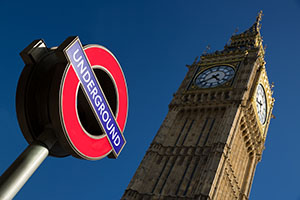On Wednesday 31st January at 19:00 GMT (U.K. time), the FOMC will reveal their decision regarding USA interest rates, after holding a two day meeting. The Federal Open Market Committee is a committee, within the Federal Reserve System, which has the responsibility under United States law of overseeing the nation’s open market operations, such as; rate setting, asset purchasing, treasury bond selling and other aspects that would be considered to be monetary policy. The FOMC is composed of 12 members; 7 members of the Board of Governors and 5 of the 12 Reserve Bank presidents. The FOMC schedules eight meetings per year, they’re held approximately six weeks apart.
The general consensus, from the opinions gathered through a panel of economists polled by the Reuters news agency, is for no change of the main borrowing rate (termed upper bound) which is currently at 1.5%, after a raise of 0.25% was announced in December. The FOMC kept to its commitment made earlier in 2017 to raise rates three times during 2017. In its final meetings of 2018 the FOMC also committed to a series of interest rate rises in 2018, whilst also committing to begin invoking Q.T. (quantitative tightening); shrinking the Fed’s circa $4.2 trillion balance sheet, which has grown by circa $3 trillion since the 2008 banking crises.
Despite the commitment to raise rates during 2018, the FOMC were deliberately vague regarding the timing and were careful not to obligate the committee to a hawkish policy. Instead, they adopted a neutral policy; insisting that each future rise would be monitored carefully for its impact on the USA economy. Suggesting that if any detrimental effect occurs, perhaps slowing growth, then the policy could be adjusted. With inflation close to the FOMC/Fed target rate of 2.1% and little signs of inflation pressures building in the economy, any rate rise decision is unlikely to be influenced in order to control inflation.
If the FOMC announce a hold of the interest rates, attention will quickly turn to the various statements accompanying the announcement and the conference held by the chair of the Fed Mrs. Janet Yellen, who will be chairing her last meeting and holding her last press conference, as chair of the Fed before being replaced by the new Fed chair, Jerome Powell, the preferred choice of president Trump. In any written statement and the press conference, analysts and investors will read carefully and listen intently for any clues as to the balance between doves and hawks in the FOMC; hawks would be pushing a more aggressive raising of rates and a speedy reduction of the Fed’s balance sheet. A more detailed analysis of the FOMC meeting will come when the minutes are released, within a few weeks of the meeting taking place.
Whatever the decision and the accompanying narrative, interest rate decisions historically move the markets of the domestic country in which the decision is made. Equity markets can and do rise and fall, as do currency markets immediately before, during and after the decision is released. The U.S. dollar has been subject of much debate during 2017, given its fall versus its main peers, despite the FOMC rising the rate by three times in 2017, doubling the rate from 0.75% – 1.5%. Traders should therefore diarise this high impact economic calendar event and adjust their positions and risk accordingly.
KEY ECONOMIC INDICATORS FOR THE USA ECONOMY
• GDP 2.5%.
• GDP QoQ 2.6%.
• Interest rate 1.5%.
• Inflation rate 2.1%.
• Jobless rate 4.1%.
• Debt v GDP 106.1%.

